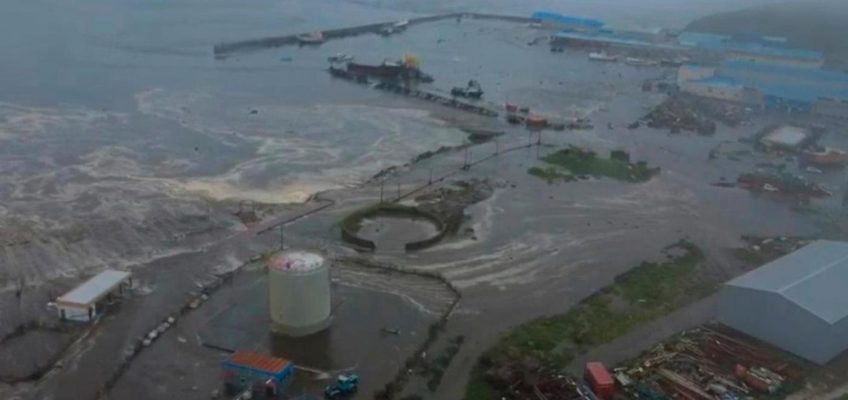By Kimberly Palmer, NerdWallet
On Reddit, a user recently asked how to recover from a money mistake.
They had taken out a high-interest loan for a car and made good on the payments, but regretted the extra cost the interest added over time.
They asked if they should now use their savings to pay off the remainder of the loan in a lump sum and put the whole experience behind them.
While some Reddit users suggested continuing with the payments, many agreed that paying off the loan would be a smart move. Learn the lesson, don’t dwell on the regret and move on to better experiences, they said.
Recovering from a big money mistake — whether it’s a regrettable purchase, accumulating significant debt or blowing through savings — is a common challenge.
We asked financial experts for their own take on how to recover. Here’s what they said:
Avoid fixating on the error
While it’s tempting to obsess over a money mistake, there’s little benefit to doing so, says Brenton D. Harrison, certified financial planner and host of the podcast, “New Money, New Problems.”
Instead, he says, focus on what you’re going to do differently in the future.
Harrison experienced his own money regret when he almost purchased a rental property in Nashville with his wife over a decade ago. They ultimately decided not to purchase the property. Now they feel like they missed an opportunity because property values have risen significantly.
Today, he actively avoids driving near that property because doing so would stir up those feelings of regret. “It’s not productive for me,” he says.
Similarly, he urges anyone who regrets a pricey purchase to hide the item away in their closet or otherwise put it out of sight so they don’t have to constantly think about the mistake.
While you can’t hide a car, you could pay off the loan and stop being reminded of the past interest payments.
If you can, undo the mistake
If you bought something you’re now having doubts about, try to return it, says Mykail James, a Washington, D.C.-based financial educator.
“Most things are returnable. Just send it back, and don’t be embarrassed about returning things,” she says. “They have a return policy for a reason.”
Even if it’s a purchase like a concert ticket, you might be able to sell it.
“You can always figure out a way to reverse it, and if there’s no way to reverse it, then be happy with what you got and do better next time,” James suggests.
In the Reddit user’s case, it might be possible to sell the car for more than is left on the loan.
Create a recovery plan
Some mistakes, like accruing high-interest car debt, may require a focused recovery plan.
“Create a repayment schedule and timeline that’s realistic for your budget,” Harrison says.
You might opt for the debt snowball method, where you pay off the smallest debt first to build momentum, or the debt avalanche method, where you tackle the debt with the highest interest rate first.
There’s no right or wrong choice; the best method is the one that works for you.
Harrison cautions that it’s still important to be mindful of other money goals while focusing on debt repayment.
“One of the most common mistakes I come across is that people get really motivated to pay back debt and they put more money toward it than they should,” he says.
Then, when another emergency comes up, they lack the savings to handle it. Harrison suggests paying down the debt in a way that allows you to leave room in the budget for emergencies.
Recovery may take patience, he adds. “Go in with realistic expectations,” he says. If it took years to destroy your credit, then it could also take years to improve it.
Make a different choice next time
After making a money mistake, it’s worth thinking about how you’ll do it differently next time, Harrison says. Consider the thought process you went through before making the mistake. Did you act on impulse? Was a desire to “keep up with the Joneses” your motivation?
“If there’s a lesson to be learned, make changes so you don’t lead yourself astray in the future,” he says.
Otherwise just acknowledge that sometimes you can do everything right and still end up making a mistake.
“Dust yourself off and move on. There’s no point in focusing on the past,” he says.
Reddit is an online forum where users share their thoughts in “threads” on various topics. The popular site includes plenty of discussion on financial subjects like money mistakes and successes, so we sifted through Reddit forums to get a pulse check. People post anonymously, so we cannot confirm their individual experiences or circumstances.
More From NerdWallet
The Broke Black Girl: ‘I Budget for Joy No Matter What’
7 Ways to Keep the Summer Spending Craze Under Control
Making $200K and Still Feel Financially Stretched? You’re Not Alone
Kimberly Palmer writes for NerdWallet. Email: kpalmer@nerdwallet.com. Twitter: @kimberlypalmer.
The article Asked on Reddit: How Do I Recover From a Big Money Mistake? originally appeared on NerdWallet.




